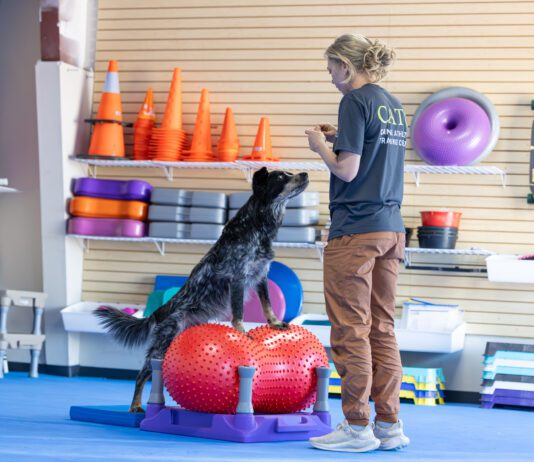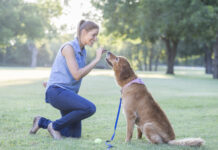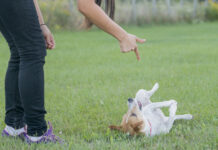Why Balanced Dog Training Isn’t Recommended
The term “balanced dog training” is often misunderstood to mean taking a holistic approach to teaching dogs. However, in the dog training world “balanced” refers to the use of both aversive and non-aversive training methods. A growing body of research is showing that dogs trained using aversive techniques (e.g. leash jerks with a choke or prong collar, shock delivery through e-collars, hitting or yelling at the dog) experience poorer welfare both within and outside the training context compared to dogs trained with reward-based (positive reinforcement) methods.
Using Dog Sign Language in Training
Do you use hand signals to communicate with your dog? You should! When dogs know both hand signals and verbal cues, they are far more likely to respond to the hand signal than a verbal cue. A study published in Animal Cognition shows that “while dogs respond to both gestural and verbal requests, gestures are more salient than words.”
How to Teach a Dog to Sit
Sit is one of the first things many people teach their dogs, and it’s a helpful trick. It’s the foundational skill for a sit-stay...
Why Alpha Dog Training is Outdated
Outdated practices and philosophies of dog training, such as dominance training or the need to be the “alpha” pack leader persist, despite being debunked by modern science. Let’s take a brief look into the history of dog training to understand where practices like alpha dog training originated.
Train a Dog to Ring a Bell
Although many dog parents want to train their dog to ring a bell to go outside, this is an option that dogs most frequently learn to use for alternate purposes. Especially if you combine pottying with walks or if you have a fenced yard.
How To Train a Dog to Use a Pee Pad
How you train a dog to use a peed pad changes when you are training a mature dog
Positive Reinforcement Dog Training: 6 Tips for Training With Treats
Training with treats is cornerstone of positive reinforcement dog training. It’s dog-friendly, it’s fun and the basics are easy for trainers of all ages and skill levels. At its core, the concept is simple: feed behaviors you want to see happen more often.
Why E-Collar Dog Training Is Not Recommended
E-collars are dog-training devices used to deliver several stimuli to the dog wearing the collar, including auditory, vibration, and electric shock. There are several...
How to Teach a Dog to Lie Down
Are you having a difficult time teaching your dog to lie down? With some dogs, it’s more difficult than others, but it’s not impossible. The reason is likely that you are not properly communicating what you want. In some cases, however, timid dogs are less comfortable lying down. It’s up to you, as the trainer, to determine where your difficulties lie.
Teach Your Dog to Play Dead
Tricks are great crowd pleasers, and teaching your dog how to play dead along with other tricks is a fun way to bond. If “play dead” is on your tricks wish list, here’s what you need to know to achieve a star-worthy performance.
Best Tools for Daily Dog Training
When it comes to training our canine companions, there are a few important items — beyond essentials like a collar and leash — that you’ll want to have on hand to set you and your dog up for success.
How to Keep Dogs Off the Couch
For many people, a dog on the furniture is taboo, an unacceptable behavior. Others may be wishy-was about it. Once the dog becomes used to getting on the furniture, it becomes a learned behavior though.


















